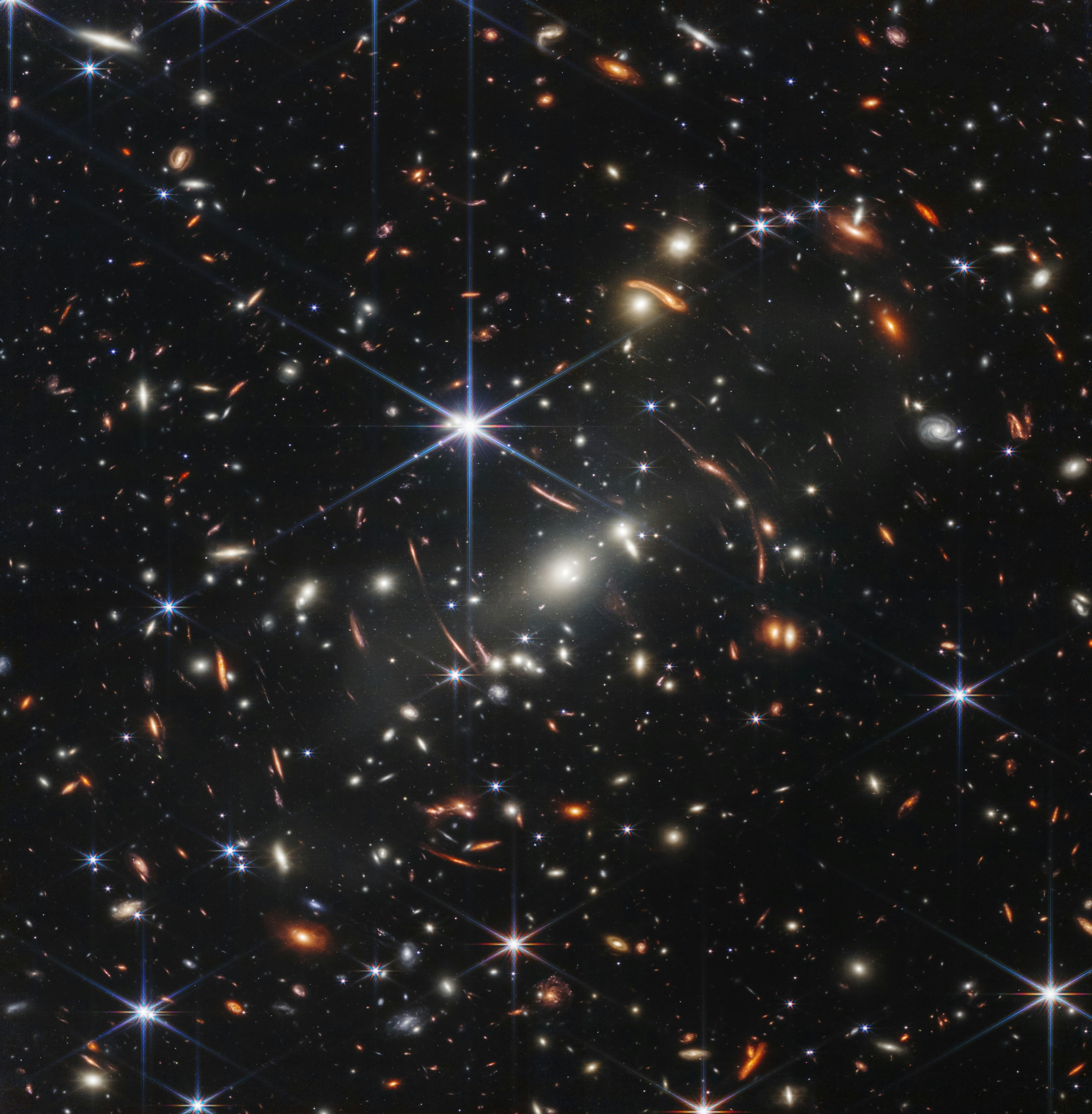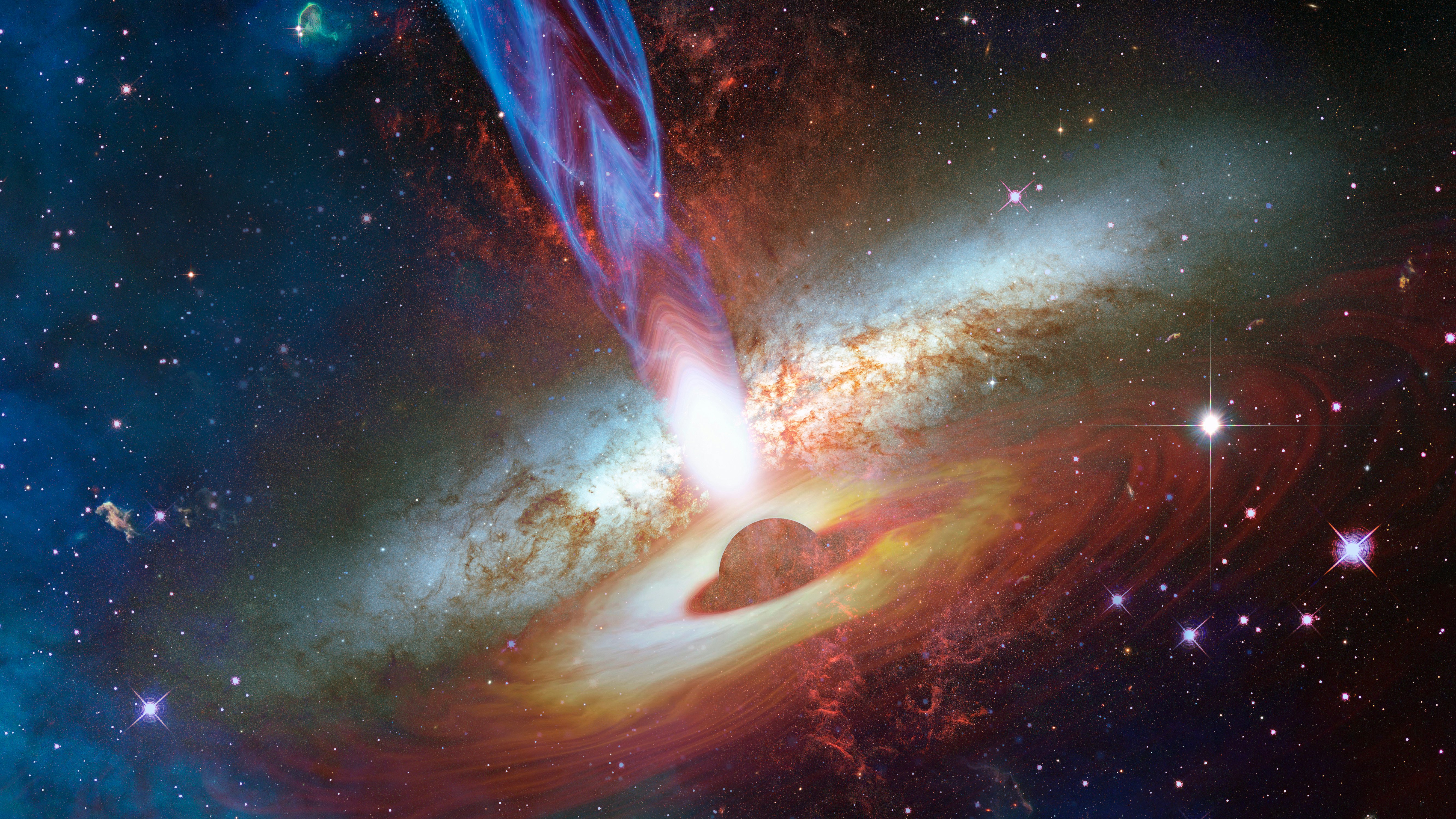
There is a massive monster lurking at the beginning of the universe, 10 billion times the mass of our Sun. And one of the James Webb Space Telescope’s (JWST) first tasks will be piercing through the shroud of incredible distance and time to help astronomers determine if it is what it seems to be: a supermassive black hole, one out of a handful of the largest yet found, from the earliest moments of star formation.
The search, part of JWST’s first cycle of observations, is being led by Jinyi Yang, an astronomer and the Peter Strittmatter Fellow at the University of Arizona’s Steward Observatory. Her team will be one of the first to use the new instruments available on JWST to observe the formation of a quasar — the ultra-bright core of a galactic nucleus with a supermassive black hole at its center — in the epoch where stars and galaxies were only just beginning to form.
WHAT’S NEW — As JWST has begun to release its first images to the public, this is one of the Cycle 1 General Observers (or “GO”) targets. Over the next year, 6000 hours of the new space telescope’s time will be spent on projects selected from proposals from astronomers and physicists from around the world — 286 projects were selected out of over 1000 proposals from 44 countries, and the majority are relatively short, like this proposal. The total time Webb will spend on these measurements is less than six hours, but the gains will be like nothing astronomers have seen before.
Speaking with Inverse, Yang noted that the sensitivity and resolution of the Webb telescope’s Near Infrared Spectrograph (or NIRSpec) means that astronomers “will be able to see what we have never seen.” The ability to get high-resolution data from spectra in the mid-infrared wavelengths (30-50 micrometers) will allow astronomers to catch a glimpse of a monster black hole from the very beginning of the formation of stars, galaxies, and black holes.

WHY IT MATTERS — The quasar that Webb will target for this research, J0038-0653, is one of the very oldest that we know about. Its infrared waves are from the first 800 million years of the universe’s existence, and the inflation of the universe means it has been traveling 13 billion years to reach us. Because of this vast distance, even the most powerful instruments could do little more than confirm its existence. In fact, the first quasars from this early in the formation of stars, galaxies, and black holes were only found a little over a decade ago, a discover Yang credits with the direction of her career.
Because it is so old, the quasar is moving away from Earth that it appears in such high redshift that it can only be observed at high resolution with instruments that can cover the mid-infrared spectrum. Webb’s NIRSpec will be able to observe a tiny slice of sky to measure the mass of the supermassive black hole within the quasar. Right now, astronomers only have a general sense of the mass of the black hole’s mass.
Having a much more precise measurement would help to clarify how black holes began to grow in the early universe. If the James Webb Space Telescope can confirm this quasar really is this massive, it would mean that early black holes were especially massive–or grew much more quickly than their modern counterparts.
Dr. Yang also notes that because high-redshift quasars like this one are so bright and so distant, observations of them and their spectra provide direct information about the state of the intergalactic medium—the extremely diffuse plasma that isn’t gathered into galaxies—as galaxies formed. The quasars illuminate the process by which the earliest galaxies formed during the epoch of reionization.
WHAT’S NEXT — Right now, GO projects like this one are going to be using a little over half the James Webb Space Telescope’s time over the next year as the program begins to work through its first observation objectives. Right now, this is one of 29 small projects focusing on supermassive black holes and other active galactic nuclei, which Dr. Yang notes are going to start a “whole new generation in astronomy.” But for the time being, she adds, “it’s a little nervous to wait for the data but very exciting.”







